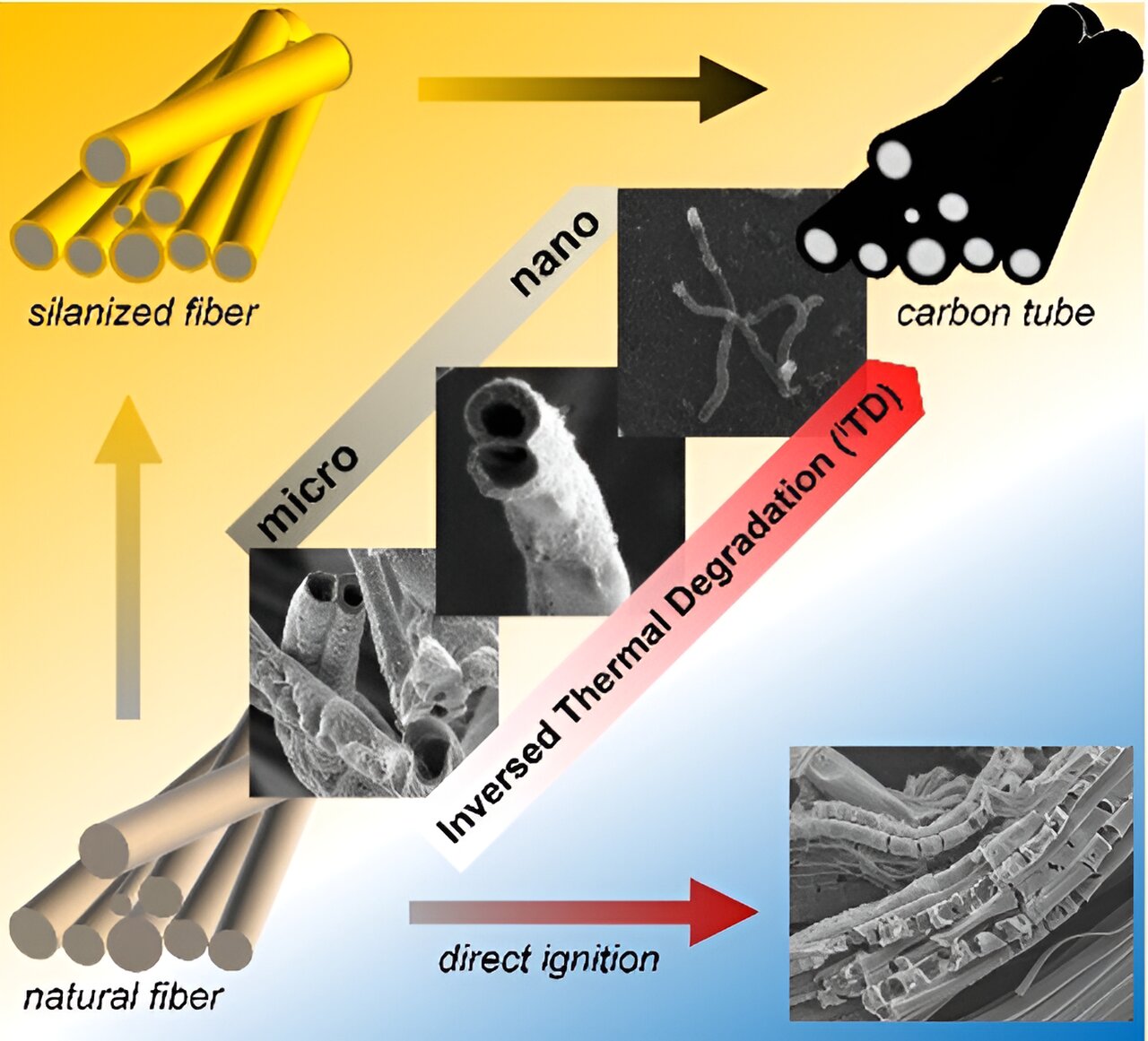Imagine being able to control a fire with precision, directing its heat to create the perfect material. Well, researchers have made this a reality by developing a groundbreaking technique that uses a molecule-thin protective layer to tame the flames and manipulate the characteristics of the processed material.
Fire has always been a valuable tool in engineering, but controlling its behavior has been a challenge. “Once you start a fire, you often have little control over how it behaves,” says Martin Thuo, a professor of materials science and engineering at North Carolina State University.
Thuo and his team have developed a technique called inverse thermal degradation (ITD), which involves applying a nanoscale thin film over a targeted material. This film responds to the heat of the fire and regulates the amount of oxygen that can access the material. By controlling the rate at which the material heats up, they can influence the chemical reactions taking place within it. Essentially, they can fine-tune how and where the fire changes the material.
Here’s how ITD works: a target material, like a cellulose fiber, is coated with a nanometer-thick layer of molecules. When exposed to an intense flame, the outer surface of the molecules combusts easily, raising the temperature in the immediate vicinity. However, the inner surface of the molecular coating chemically changes, creating an even thinner layer of glass around the cellulose fibers. This glass limits the amount of oxygen that can access the fibers, preventing them from bursting into flames. Instead, they smolder and burn slowly from the inside out.
“Without the ITD’s protective layer, applying flame to cellulose fibers would just result in ash,” explains Thuo. “With the ITD’s protective layer, you end up with carbon tubes.”
The researchers conducted proof-of-concept demonstrations using cellulose fibers to produce microscale carbon tubes. They were able to control the thickness of the carbon tube walls by manipulating the size of the cellulose fibers, introducing various salts to the fibers to control the rate of burning, and adjusting the amount of oxygen that passes through the protective layer.
“We have several applications in mind already, which we will be addressing in future studies,” says Thuo. “We’re also open to working with the private sector to explore various practical uses, such as developing engineered carbon tubes for oil-water separation, which would be useful for both industrial applications and environmental remediation.”
The groundbreaking work has been published in the journal Angewandte Chemie International Edition.








